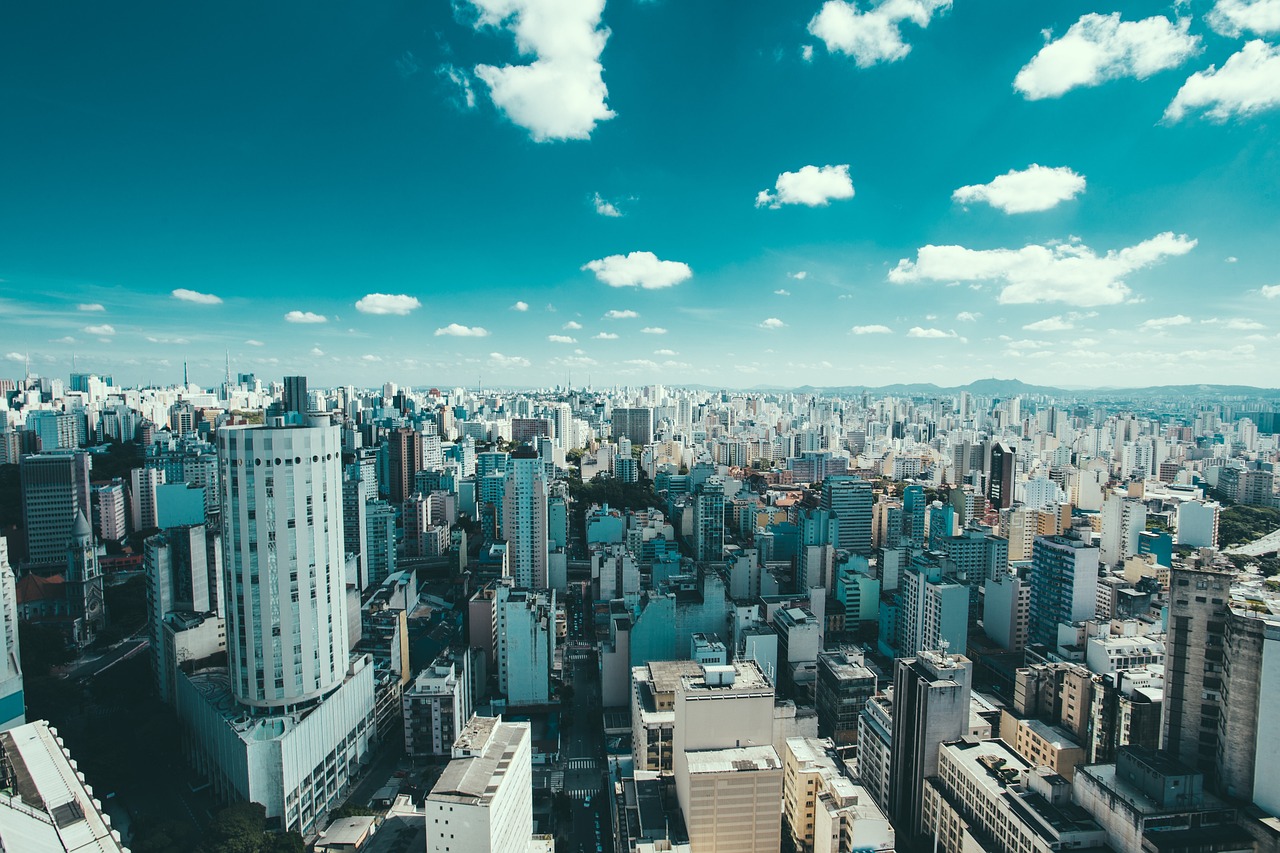Blockbuster Offshore Oil Discoveries Power the Brazilian Fossil Fuel Industry

Brazil’s Energy Transformation
Recent discoveries of massive offshore oil and gas reserves have transformed the South American country of Brazil into one of the world’s biggest fossil fuel producers. As a country that physically occupies nearly a half of South America’s total landmass, Brazil has a commanding presence in Latin America. In terms of total land area, Brazil is the fifth largest country. Similarly, Brazil is also the fifth most populous country in the world, with a population of about 212 million at the beginning of 2020. With its immense total land area and rapidly growing population, Brazil is known as a developing country with growing energy needs. According to the International Energy Agency, Brazil’s total demand for energy has doubled since 1990. This rapidly increasing demand for energy has been met through a combination of growth in both renewables and fossil fuels.

A Global Fossil Fuel Leader
Brazil is the third-biggest producer of fossil fuels in the Americas and also the ninth-biggest producer in the world (EIA, 2019). While Venezuela holds more oil reserves than any other country in the world, Brazil overtook the country in 2017 as South America’s biggest oil and gas producer. In recent years, new offshore oil and gas projects have helped to transform Brazil into one of the most important fossil fuel producers in the world. These discoveries have also helped the country provide the majority of the oil and natural gas needed to sustain its rapidly growing economy. According to energy data released in 2017, Brazil pumped nearly 3.36 million barrels of oil per day, leaving the country only behind the U.S. and Canada in terms of overall oil production in the Americas (EIA, 2019). The 2018 worldwide energy report, released as part of the semi-annual Oil and Gas Journal, highlighted how Brazil held about 12.6 billion barrels of proven crude oil reserves, which is the second-biggest endowment of oil in South America behind Venezuela’s enormous 300 billion barrel reserves.
The oil and gas industry in Brazil has helped the country emerge from an extended period of economic stagnation. The World Bank reports that social and economic progress made between 2003 and 2014 ended up lifting about 29 million Brazilians out of poverty. The oil and gas industry has provided the Brazilian government with sufficient revenues to restore fiscal sustainability and helped reduce poverty and economic inequality. A strong recession that was followed by a damaging economic crisis led to increased periods of geopolitical conflict in Brazil. As poverty became widespread, violence continued to spread, and investor confidence all but vanished from the Brazilian economy. Then, a wave of optimism swept through Brazil following the discovery of large offshore oil and gas reserves.

A Storied History
While oil and gas projects in Brazil have only recently been the focus of international investors, Brazil has a long history in the fossil fuel industry. The first recorded expedition related to oil exploration in Brazil took place during the 19th century. In 1864, a British entrepreneur named Thomas Denny Sargent was granted permission to explore for and extract oil and other natural resources within the Camamu and Ilhéus districts of central Brazil. Following this early oil-related expedition, the Geological and Mineralogical Service of Brazil (GMSB) was founded in 1907 to move forward with future oil and gas exploration efforts. Although, after drilling over 60 individual oil wells through numerous Brazilian districts, the GMSB was found to be largely unsuccessful at finding oil reserves.
Later on in 1934, a decree known as the Promotion of Mineral Production (DNPM) was established to promote better oil exploration techniques. As a result of the DNPM, U.S. oil specialists were hired to work with an independent Brazilian oil company to develop an economically feasible strategy to find and extract oil. After a number of small discoveries, the National Petroleum Council was developed in 1938 to help regulate oil production activities. By 1941, Brazil was only producing 2,700 barrels of oil per day, while the country was consuming roughly 170,000 barrels of oil per day (Braga, 2018). This massive gap between oil production and oil consumption was viewed as problematic to say the least. As the demand for energy continued to grow, the Brazilian government decided to take more action to stimulate the oil and gas industry by establishing Petrobras, which became an influential semi-public Brazilian multinational oil company.

The Emergence of Petrobras
When Petrobras was first established in 1953, only 36 percent of the Brazilian population lived in cities (Oddone, 2016). However, over the course of the next 60 years, Petrobras grew into a diverse state oil company that helped to transform the former agrarian economy into an industrialized nation. Petrobras incorporated a new strategy into Brazil’s oil industry, which included offshore oil and gas exploration. The first offshore discovery was made in 1968 with the Guaricema oil field, just off the coast of central Brazil. Following the 1973 Arab Oil Embargo, Petrobras vastly expanded its offshore oil and gas exploration in order to hedge against a future oil crisis, which would arrive by 1978. This crisis sent inflation soaring by 72 percent and sent Brazilian government debt upwards by $50 billion (Braga, 2018).
Following the 1978 crisis, Petrobras expanded its oil exploration portfolio with a number of new deep-water oil drilling sites in water depths of over 200 meters. Following technological advancements that made this level of oil exploration possible, many new deep-water oil reserves were discovered in the 1980s and 1990s. However, all of these previous discoveries would be dwarfed by the massive discovery of the Lula oil field in 2007. The Lula discovery is considered to be one of the largest offshore oil discoveries of the past 30 years. This single discovery helped to launch Brazil into a global oil and gas production giant. However, the Lula discovery exacerbated internal political conflicts about how best to extract these newly found oil reserves. As a result of the conflict and inability to come to a consensus about auctioning off new areas for exploration and production, a five-year debate ensued and massively disrupted offshore oil production.

Growth in Renewables
The political and regulatory debate over the Lula oil discovery was particularly problematic because Brazil’s demand for energy continued to grow during the five-year hiatus on offshore oil exploration. This provided a tremendous opportunity for the country’s renewable energy industry. Numerous biomass plants, solar parks, and wind farms began to operate during this period. According to the International Energy Agency, this period of time helped to transform Brazil into one the least carbon-intensive countries in the world. Today, renewable energy makes up nearly 45 percent of the country’s primary energy needs (IEA, 2020). As a result of the massive growth in energy demand since 1990, renewable energy projects helped to fill the gap in oil and natural gas production. Almost 80 percent of Brazil’s total domestic electricity is powered by hydropower plants alone (IEA, 2020).
As concerns related to climate change and environmental sustainability have swept through the world, Brazil has expanded efforts to develop new sources of power through wind, solar, and bioenergy. While hydropower continues to expand as well, some environmental advocates have criticized the country’s leaders for permitting large hydropower projects that impact environmentally sensitive areas of the Amazon rainforest. Data from the International Energy Agency shows that 20 GW worth of hydropower projects are currently underway in the Amazon.

Transportation Energy
Even though renewables have helped to make electricity production greener in Brazil, the growth of the transportation sector has continued to put more pressure on oil consumption. Transportation in Brazil accounts for the biggest oil-consuming sector in the country. In 2017, total energy consumption from Brazil’s transportation sector accounted for 33 percent of the country’s total energy demand (EIA, 2019). As a result of the country’s carbon-intensive transportation system, Brazil has had to continue to import oil. Even though Brazil is now known as a net oil exporter, the country still imports around 616,000 barrels of crude oil per day, the majority of which comes from the United Sates (EIA, 2019).
The rise of personal automobile transportation has transformed Brazil’s economy into one that relies heavily on fossil fuels. For example, between 1940 and 1979, fossil fuels as a share of Brazil’s total energy consumption rose from nine percent to 41 percent (Pirani, 2018). This significant increase in fossil fuel consumption has been attributed to the rise of motorization in Brazil. Until electric vehicle sales start to outnumber gas-powered vehicle sales, oil consumption is expected to continue to rise in Brazil’s transportation sector.

Increasing Oil Exports
As a relatively new oil exporter, the Brazilian economy has started to benefit significantly from oil sales in recent years. In 2017, Brazil exported about 997,000 barrel of oil per day, which was up a massive 25 percent when compared to exports in 2016 (EIA, 2019). China is the world’s biggest importer of Brazilian oil. In 2017, China increased its Brazilian oil imports by 43 percent over 2016 levels, which brought total daily imports to around 423,000 barrels (EIA, 2019). In addition to becoming a major global exporter of oil, Brazil has dramatically increased its ability to domestically refine petroleum products. According to research published in the Oil and Gas Journal, Brazil ranks ninth in the world in terms of ita ability to refine 2.1 million barrels of crude oil per day.
Forecasts from the International Energy Agency predict that Brazilian oil exports will pass one million barrels per day by 2022 (IEA, 2020). Growth within the offshore Lula oil fields are expected to continue to propel Brazil’s oil industry in the coming years. Petrobras continues to develop some of the most sophisticated deep-water oil extraction technologies in the world. Petrobras currently extracts offshore oil from wells in excess of 1.5 miles below the surface of the water. Technology is also being developed to efficiently extract oil from the newly discovered Tupi offshore oil field, which is said to contain between five and eight million barrels of oil about 4.3 miles below the surface of the water (Poppino et al, 2020). The Tupi field has also been reported to hold abundant reserves of natural gas.

Deep-Water Success
The success of Brazil’s deep-water oil industry has catapulted Brazil’s oil and gas industry into one of the global leaders. Following the discovery of the Lula oil field, Petrobras was able to secure $70 billion in capital funding to vastly expand oil drilling, exploration, and extraction operations (Oddone, 2016). While the exact size of the Lula oil field is still being calculated, estimates have varied widely. Some energy analysts say that the offshore field could hold up to 300 billion barrels of oil, making it one of the single biggest reserves in the world (Costa, 2017). However, most economists and energy analysts believe that reserves of between 70 and 100 billion barrels of oil may be representative of more realistic estimates. Regardless of the exact quantity of the Lula reserves, environmentalists from around the world are urging the Brazilian government to revitalize efforts related to renewable energy development rather than continuing to invest billions of dollars into oil extraction efforts.
Sources
Braga, L. (2018). “Oil in Brazil: Evolution of exploration and production.” Grenoble Institute of Technology.
Costa, A. (2017). “As the Earth Heats Up, Brazil Digs Deeper.” North American Congress on Latin America Report on the Americas, (49)4, 444-450.
EIA. (2019). “Brazil.” U.S. Energy Information Administration.
IEA. (2020). “Brazil.” International Energy Agency.
Nogueira., and Slattery, G. (2019). “As Brazil’s oil industry grows, environmentalists raise red flags.” Reuters.
Oddone, D. (2016). “Oil and Gas in Brazil: A New Silver Lining?” Atlantic Council Adrienne Arsht Latin America Center.
Pirani, S. (2018). “Burning Up: A Global History of Fossil Fuel Consumption.” Pluto Press: London.
Poppino, R., et al. (2020). “Brazil.” Encyclopedia Britannica, Inc.



